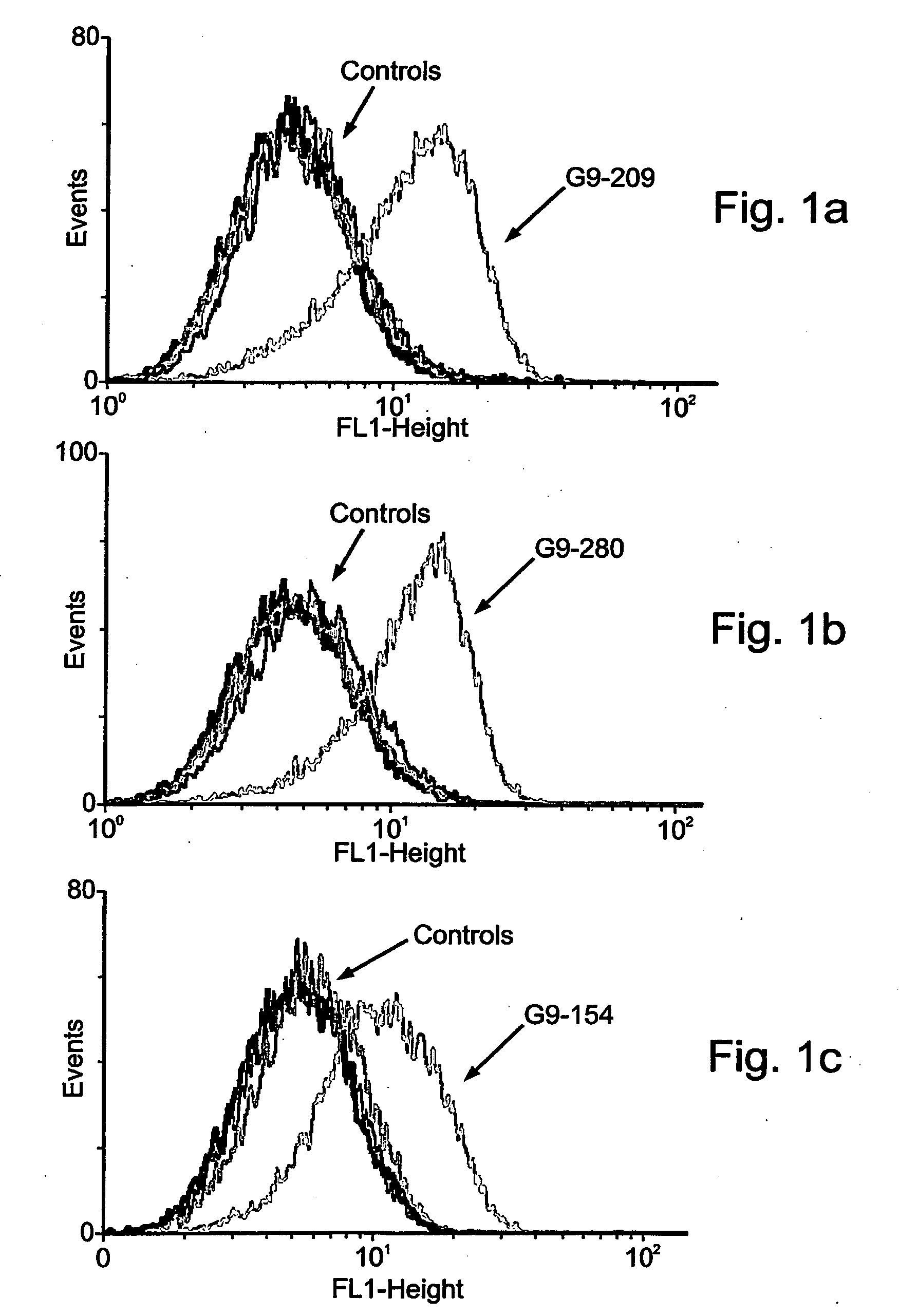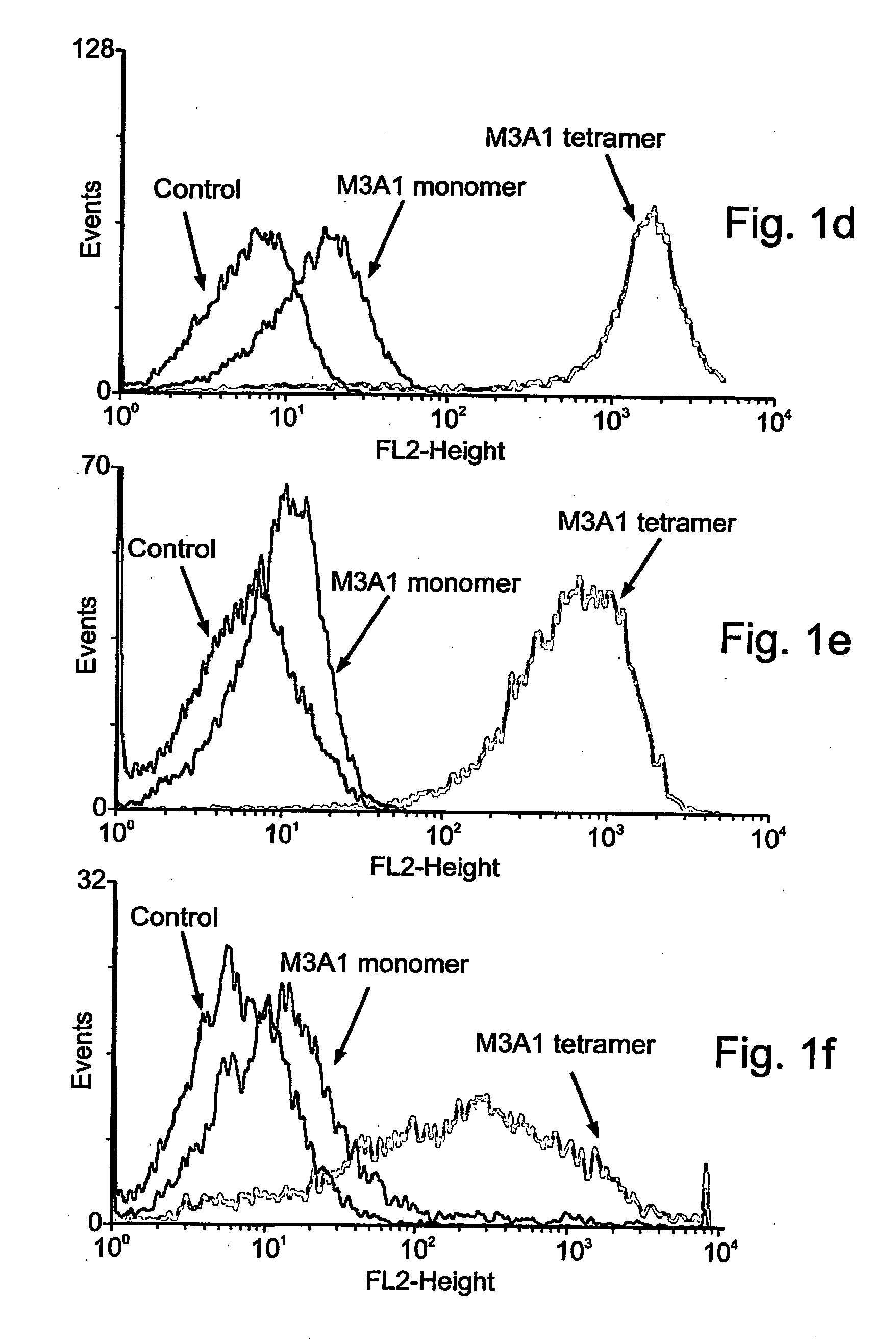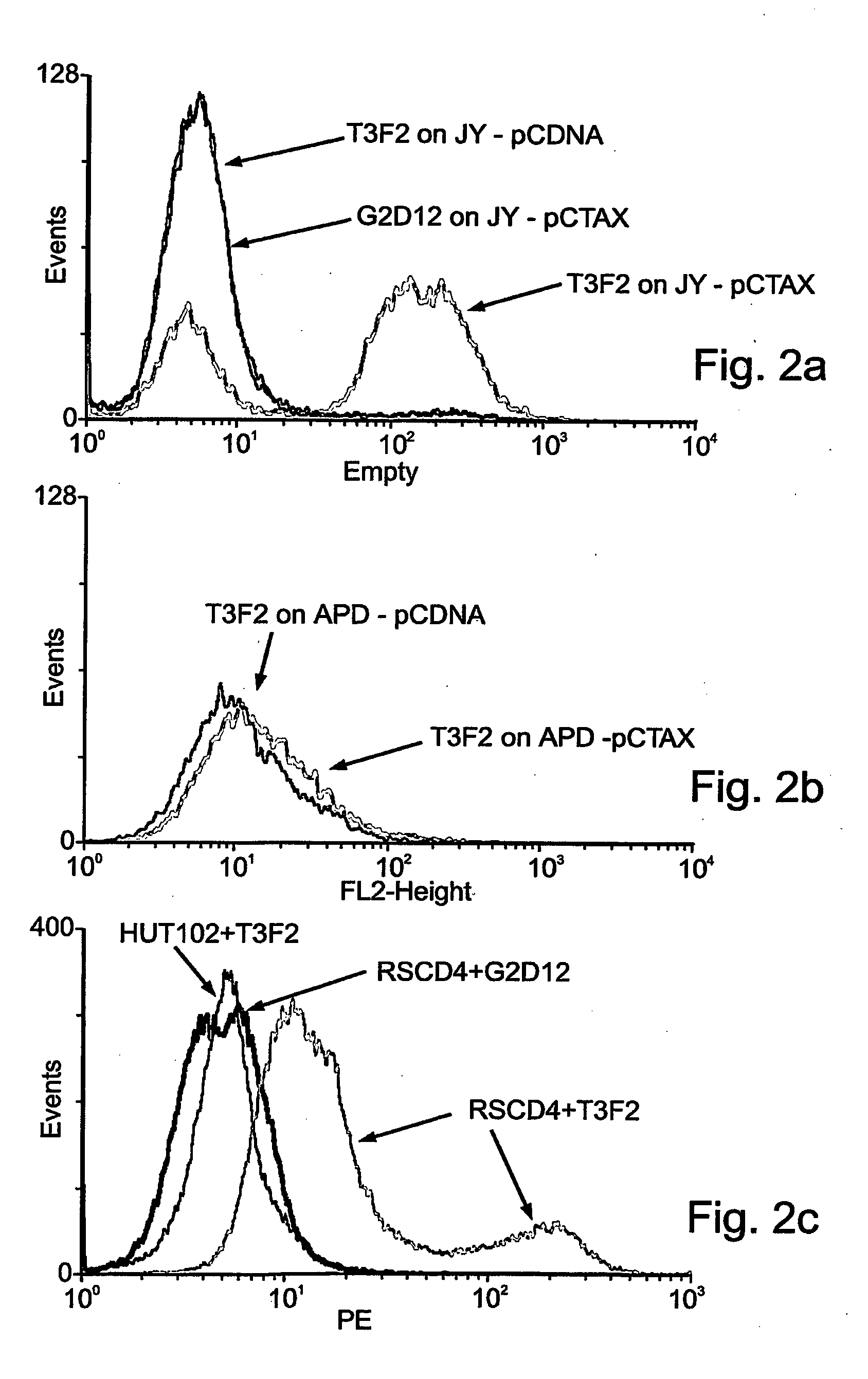Antibodies for selective apoptosis of cells
a cell-specific antibody and selective technology, applied in the field of recombinant isolated antibodies, can solve the problems of inability of the patient's immune system to elicit an effective immune response against the tumor, inability to produce antibodies with such exquisite t-cell receptor-like specificity, and inability to bind ligands. low affinity,
- Summary
- Abstract
- Description
- Claims
- Application Information
AI Technical Summary
Benefits of technology
Problems solved by technology
Method used
Image
Examples
example 1
Preparation of TCR-Like Antibodies
[0186]Isolation and Characterization of TCR-like antibodies—The model system used in the present study was the human superhaplotype HLA-A2 molecule, which is the most frequent MHC allele in the Caucasian population (approximately 40%). Recombinant MHC-peptide complexes displaying peptide T cell epitopes of peptides derived from tumor associated and viral antigens, were generated by using a single-chain MHC (scMHC) construct [Denkberg et. al., 2000; Denkberg et. al., 2001].
[0187]Lev et al., 2002, utilized recombinant-engineered single-chain MHC-peptide complexes to isolate antibodies with TCR-like specificity from a large non-immune repertoire of phage antibody library. The target HLA-A2 / peptide complexes screened included a variety of epitopes derived from tumor associated antigens such as the telomerase catalytic subunit (hTERT) widely expressed in many tumor cells, the melanoma differentiation antigen gp100 [Denkberg et al., 2002a], the epithelial...
example 2
TCR-Like Antibodies are Capable of Recognizing Specific MHC-Peptide Complexes on Melanoma Cells
[0196]To test the biological activity of a TCR-like antibody on tumor cells the antibody G1 which recognizes the HLA-A2 in a complex with the gp100-derived peptide 209, was employed in vitro, as follows. The procedures used in the experiments reported in Examples 2-5 (e.g., apoptosis, cell death, FACS, flow cytometry and antibody binding) are included in Denkberg, G., et al., 2002, Proc. Natl. Acad. Sci. USA. 99: 9421-9426; Lev, A., et al., 2002, Cancer Res. 62: 3184-3194; Denkberg, G., et al., 2003, J. Immunol. 171:2197-2207; all of which are fully incorporated herein by reference in their entirety).
[0197]Melanoma tumor cells were used to determine the reactivity of the recombinant Fab or scFv antibodies with cell surface-expressed HLA-A2 / peptide complexes. About 106 cells were washed twice with serum-free RPMI and incubated for 60-90 minutes at 4° C. with recombinant TCR-like antibodies ...
example 3
Identification of the 9H and CLA12 Recombinant Antibodies
[0200]A large human synthetic single-chain Fv antibody library was screened for antibodies capable of binding MHC-peptide complexes. In this library the in vivo formed complementarity determining regions (CDRs) were shuffled combinatorially onto germline-derived human variable-region frameworks [Azriel-Rosenfeld R, Valensi M, Benhar I. A human synthetic combinatorial library of arrayable single-chain antibodies based on shuffling in vivo formed CDRs into general framework regions. J Mol Biol. 2004 Jan. 2; 335(1):177-92].
[0201]Screening was performed essentially as described elsewhere (Denkberg, G., et al., 2002, Proc. Natl. Acad. Sci. USA. 99: 9421-9426) using the following antigens: the single chain HLA-A2-β2m molecule complexes with the G9-209 peptide derived from the melanoma gp 100 protein and the single chain HLA-A2-β2m molecule complexed with the 26-35 peptide derived from the melanoma MART1 protein.
[0202]Two scFv antibo...
PUM
| Property | Measurement | Unit |
|---|---|---|
| concentration | aaaaa | aaaaa |
| thickness | aaaaa | aaaaa |
| size | aaaaa | aaaaa |
Abstract
Description
Claims
Application Information
 Login to View More
Login to View More - R&D
- Intellectual Property
- Life Sciences
- Materials
- Tech Scout
- Unparalleled Data Quality
- Higher Quality Content
- 60% Fewer Hallucinations
Browse by: Latest US Patents, China's latest patents, Technical Efficacy Thesaurus, Application Domain, Technology Topic, Popular Technical Reports.
© 2025 PatSnap. All rights reserved.Legal|Privacy policy|Modern Slavery Act Transparency Statement|Sitemap|About US| Contact US: help@patsnap.com



